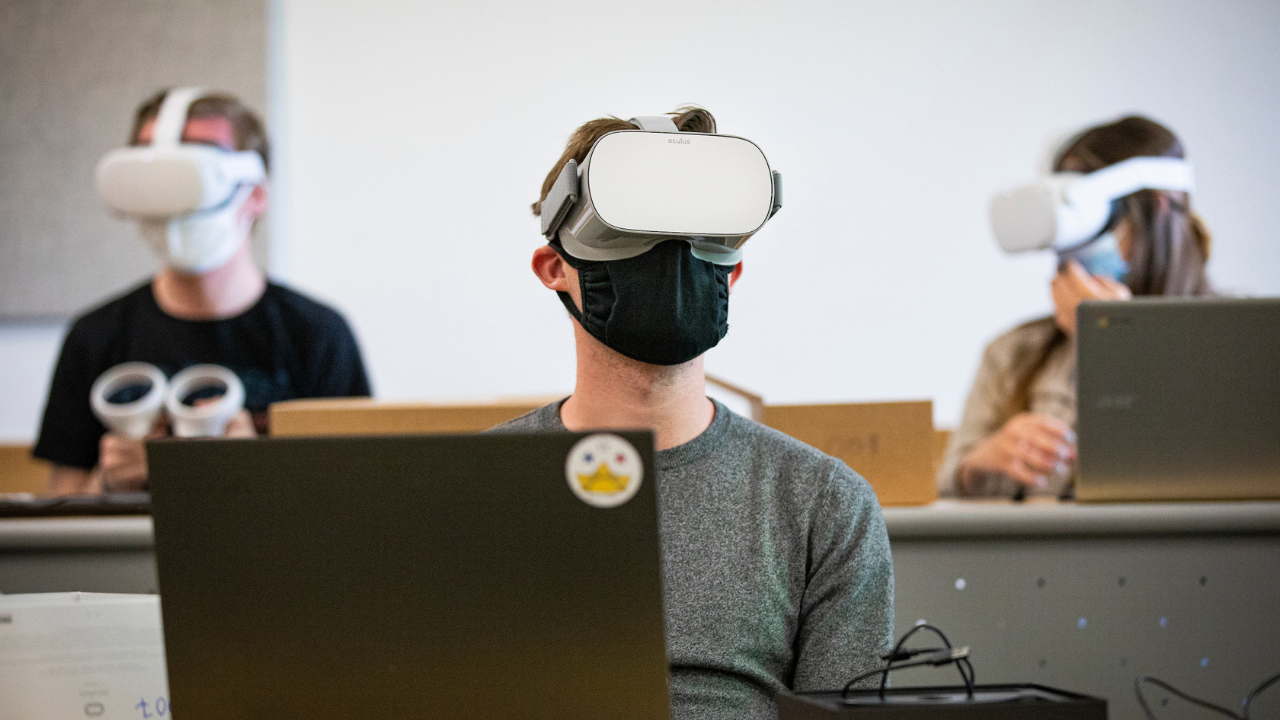This semester, students in a UVU anthropology class were able to immerse themselves in different cultures without leaving the classroom thanks to virtual reality.

Many students are drawn to anthropology because they want to learn more about local and global cultures. This semester, students in Anthropology 101G (ANTH 101G) were able to immerse themselves in different cultures without leaving the classroom thanks to virtual reality (VR).
In-class, hands-on experiences demonstrating a profession can often be implemented in subjects like design or the hard sciences. But according to Professor John Dulin, the anthropology program coordinator, getting that same kind of experience in anthropology is hard to do in the classroom. “An anthropologist conducts participant observation, which often involves living in an unfamiliar environment for an extended period of time,” Dulin said. “It requires the researcher to immerse themselves in a setting. VR technology provides a great way to convey the experience of conducting ethnographic research in an unfamiliar setting without leaving the classroom.”
Students in ANTH 101G each received a VR headset to begin their anthropological experience. Dulin then provided background about how anthropologists really conduct research out in the field — they don’t always carry around notebooks and interrupt situations so they can take notes. Instead, he instructed the students to take “mental notes” on the things that they observed, the questions they might have, and the theories they might formulate. Then, after a few minutes of technical setup, the students were ready to begin their immersive anthropological fieldwork.
Once the experience started, students were transported to a different country, people, and culture, with no context or prior experience. They were in the middle of the action, able to freely observe and interact in a manner that goes beyond typical classroom reading or lectures.
“[Using VR in the classroom means that] students can practice making observations in an unfamiliar setting,” Dulin said. “They practice asking questions to improve their understanding of different peoples and practices they may experience. It nurtures their ability to apply anthropological insights and modes of inquiry as they traverse varied cultural environments.”
Dulin sees a variety of applications for VR in the classroom, particularly when it comes to helping students to more fully understand what it means to live in different social contexts or even experience events from history.
“We would like to integrate VR with teaching in lower- and upper-division classes,” he said. “I plan to use VR in a class called ‘Peace, Violence and Human Morality’ in the fall. Some students may tend to think of war in the abstract because it is remote from their experience. There is a compelling VR documentary film on the precarity of living in a warzone that could reduce that distance a little. In our archeology classes, students can visit dig sites in VR and experience simulations of past societies. We hope VR will be used in anthropology classes wherever it creates an opportunity for students to experience the subject matter on a more intimate level.”